I've lived in Vietnam for over 10 years, and here are 7 things tourists shouldn't do when they visit
Marielle Descalsota

- Ian Paynton, a London native, moved to Vietnam in 2010.
- Over the years, he has seen tourists be disrespectful and get scammed while visiting the Southeast Asian country.
Vietnam is fast-becoming one of the most popular destinations in Southeast Asia for tourists and expats alike.
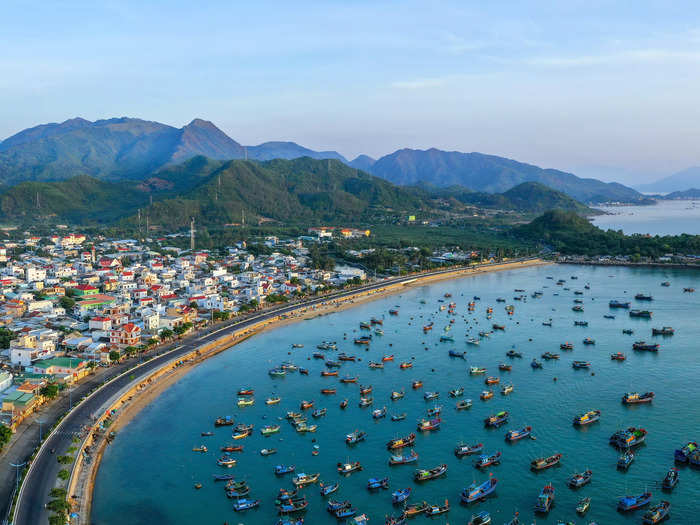
This as-told-to story is based on a conversation with Ian Paynton, the founder of content agency We Create Content in Hanoi, Vietnam shares what he's learned about Hanoi after living in Vietnam since 2010. It's been edited for length and clarity.
Vietnam, home to some 98.6 million people, is located in eastern Indochina. Vietnam has a long coastline that borders China in the north and Cambodia in the south. There's so much to explore in Vietnam, from cities and villages to mountains, beaches and caves.
It's also one of the most affordable places to visit in Southeast Asia — in 2019, around 18 million tourists visited the country. And every year, more expats from around the world start calling it home, with over 100,000 currently living in the country permanently.
I first visited Vietnam in 2007, and moved there just three years later. Before relocating to Vietnam, I lived and worked in London. There was something about the energy in Hanoi, the second-biggest city in Vietnam, that I couldn't stop thinking about.
I moved to Singapore and Hong Kong from 2013 to 2015 for work, but was keen to get back to Vietnam. I returned to Hanoi the following year and have lived in the capital city ever since.
After living in Vietnam for around a decade now, I've noticed tourists making the same few mistakes while traveling the country.
Here are seven of the most common mistakes I've seen tourists make.
1. Avoid wearing skimpy swimwear around the city after a trip to the beach.
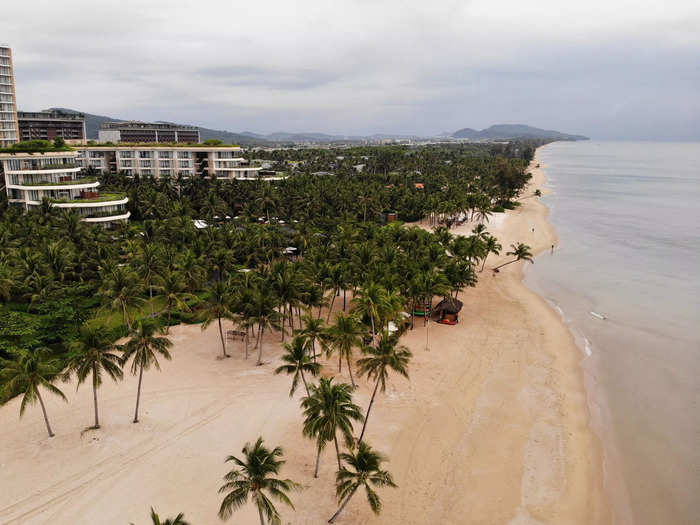
Wearing overly-revealing swimwear while visiting the beach, river, or waterfalls isn't a great look in Vietnam. Beauty in Vietnam is about class and elegance, and it's not appropriate to wear clothing that shows too much skin.
This is especially true when visiting temples and pagodas. In 2016, a foreigner was once asked to leave the sacred space for wearing a bra-like top and shorts.
While it's unlikely that a local would call out a foreigner who was wearing inappropriate clothing, it's certainly frowned upon. You're likely to catch some stares from the locals.
2. Don't take it personally when a local cuts the line or butts into traffic lanes.
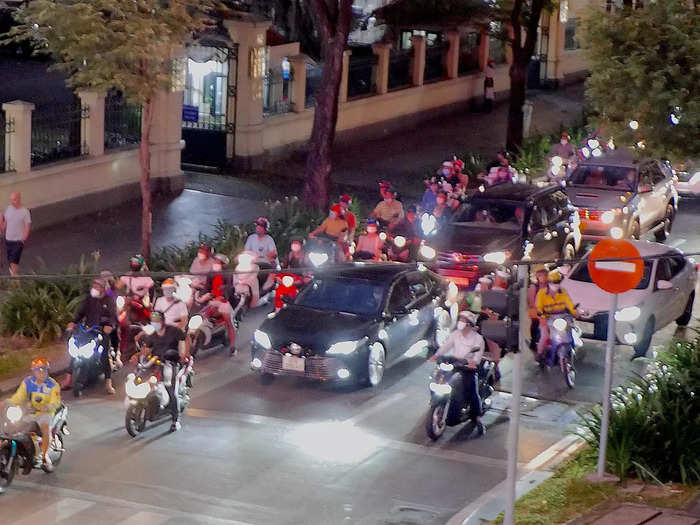
This seems to be changing, but lining up in Vietnam isn't commonplace, unless it's enforced in places like banks or the immigration counter at the airports. Tourists might feel frustrated, especially if they aren't used to it. In these instances, locals don't see it as being rude. They just see everyone else benefiting from skipping the line, so they do it too.
The same can be said for traffic jams — roads can get crowded, as there are more than 65 million motorcycles in Vietnam, as of 2020, according to Statista. If the opportunity is there to get in front, somebody will take it. Tourists shouldn't take it personally.
3. Be respectful around shrines — locals believe it's where they can worship their ancestors.
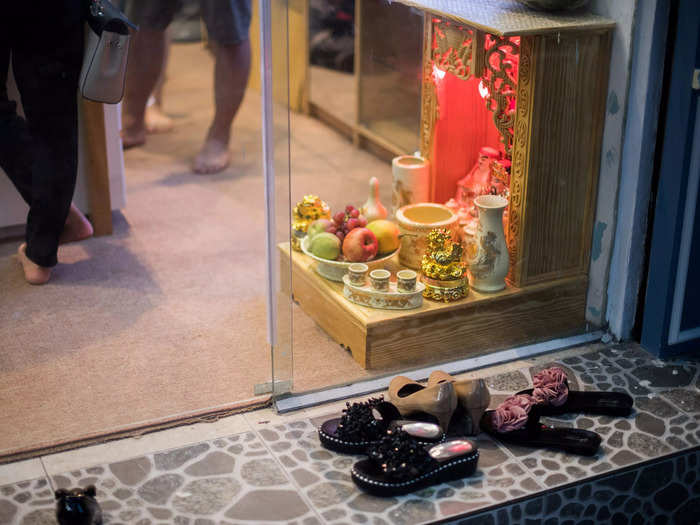
Like in other countries around Southeast Asia, houses, restaurants and workplaces have shrines. Locals often make offerings of food and drinks to honor their ancestors, and regard them as sacred.
Tourists visiting homes or countryside homestays, should be careful of what they talk about when around these shrines. Before entering these spaces, it's important to take off your shoes.
While it may come across as a private space, it's important to avoid intimate acts, like kissing, if there is a shrine in the room where you're sleeping. Locals find it disrespectful.
4. Tourists who use Tinder should be careful of nightclub scams.

Tourists should be careful if asked to meet up in a nightclub for a first date. A recent issue that has been flagged is how tour guides and nightclub hosts are using apps like Tinder to find customers.
After matching on Tinder, these hosts invite them to the club where they work. It's being done as a ploy to get more customers through the door. A Reddit thread on Vietnam from last November detailed how this scam is becoming more common. Foreigners, once at the club, are often charged exorbitant prices for alcoholic drinks.
5. Don't be afraid to bargain with street vendors.
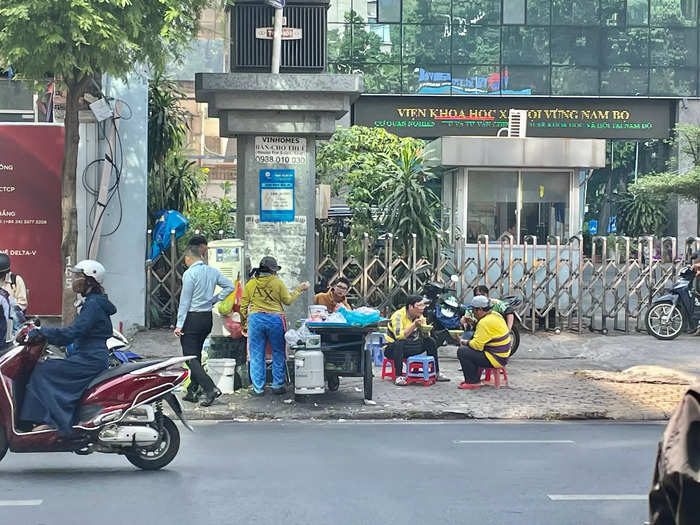
Street vendors are some of the most ubiquitous sites in Vietnam, with more than 430,000 of them peddling street food across the country in 2018, according to Statista.
It's common for street vendors to overcharge foreigners, especially at tourist hot spots. When bargaining with vendors, aim for half the quoted price.
Some vendors often charge tourists money for taking photos of them. In Hanoi, for example, fruit sellers would invite tourists to take photos with their conical hat and fruit basket — but the catch is that tourists are asked to pay around a dollar or so.
6. Make it a priority to venture out of the three big cities of Hanoi, Da Nang, and Ho Chi Minh.
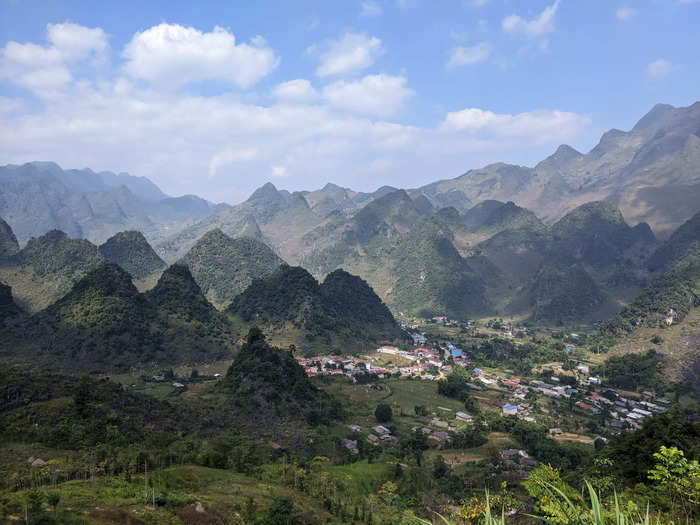
When visiting Vietnam, it's worth researching the destinations in between these major cities. Vietnam, which is about the size of New Mexico, offers a spectrum of natural landscapes from the north to the south.
Some of the must-see places that are off the beaten track include Mu Cang Chai's rice terraces, Ha Giang Province's epic mountains, jungles and caves in Phong Nha, and the ancient capital of Hue in central Vietnam.
7. Tourists should avoid getting upset if locals are late or if schedules get off track.

There are also instances when things don't go as planned during one's trip around Vietnam. It's common to be told one thing, but the reality might be something very different. It's worth leaning into the uncertainty and surprises rather than getting frustrated and angry.
Time and structure is a bit more fluid in Vietnam. It's less frowned upon to be late or change the plan at the last minute. As flexibility is valued here, locals believe that things will work in the end, one way or another.
Popular Right Now
Popular Keywords
Advertisement